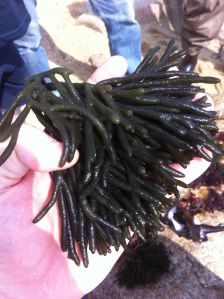Here at ConservationBytes.com, My contributors and I have highlighted the important regulating role of predators in myriad systems. We have written extensively on the mesopredator release concept applied to dingos, sharks and coyotes, but we haven’t really expanded on the broader role of predators in more complex systems.
This week comes an elegant experimental study (and how I love good experimental evidence of complex ecological processes and how they affect population persistence and ecosystem stability, resilience and productivity) demonstrating, once again, just how important predators are for healthy ecosystems. Long story short – if your predators are not doing well, chances are the rest of the ecosystem is performing poorly.
Today’s latest evidence comes from on an inshore marine system in Ireland involving crabs (Carcinus maenas), whelks (Nucella lapillus), gastropd grazers (Patella vulgata, Littorina littorea and Gibbula umbilicalis), mussels (Mytilus edulis) and macroalgae. Published in Journal of Animal Ecology, O’Connor and colleagues’ paper (Distinguishing between direct and indirect effects of predators in complex ecosystems) explains how their controlled experimental removals of different combinations of predators (crabs & whelks) and their herbivore prey (mussels & gastropods) affected primary producer (macroalgae) diversity and cover (see Figure below and caption from O’Connor et al.). Read the rest of this entry »





